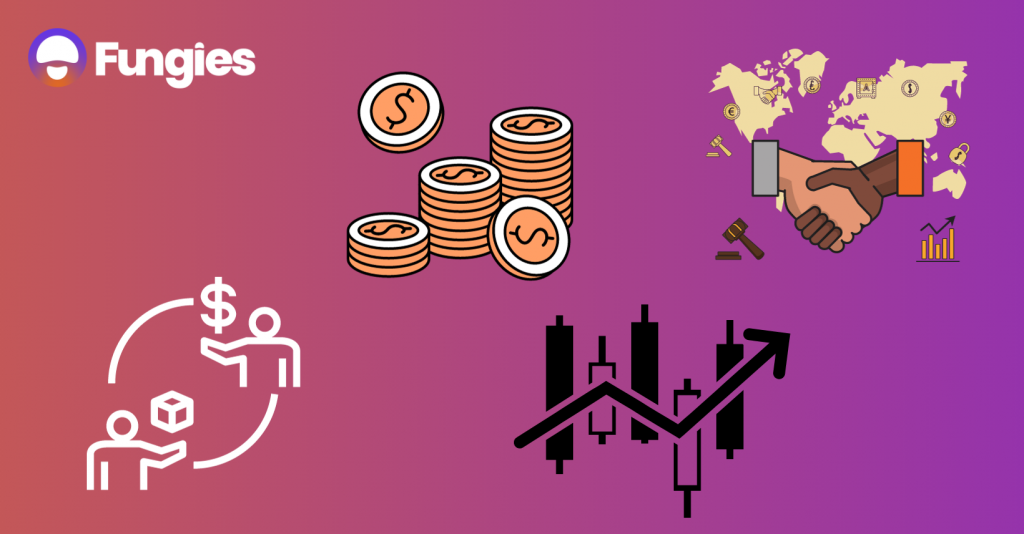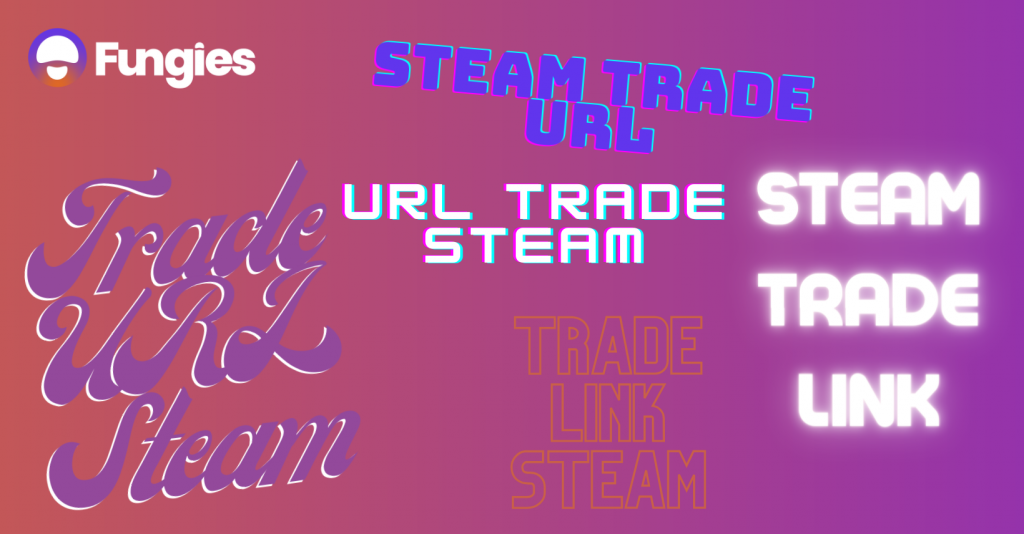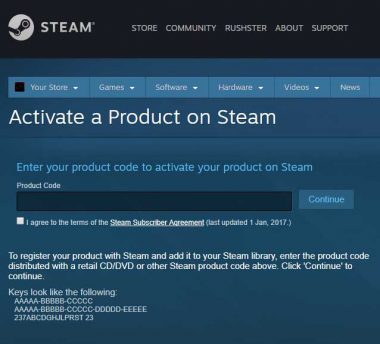The Power of Steam for Indie Developers
Steam, over the years, has evolved from being just another gaming platform to becoming a mecca for indie game developers. The resurgence of indie games on Steam is undeniable, with countless success stories and new titles popping up daily. But it’s not just about selling games. Trading, whether it’s game items, skins, or cards, has become a significant monetizing and engaging factor. It’s a way to keep your gaming community active, involved, and, most importantly, invested. That’s why understanding Steam trade URL is so important.
Why Every Indie Developer Should Know About Steam Trade URL?
Steam Trade URLs aren’t just another fancy term for developers to know. They embody automation, making life easier for developers, especially when you’re trying to manage trades or integrate trading into your games. Moreover, by using Steam Trade URLs, indie developers unlock the door to a global trading community, paving the way for more opportunities, collaborations, and revenue streams.

Streamlined Trades
At its core, a Steam Trade URL facilitates direct trades between players or with the developer. This ease of trading ensures that in-game items, be it skins, cards, or other assets, can be swiftly exchanged, enhancing player experience and satisfaction.
Monetization Opportunities
Trading isn’t just about exchange; it’s also a potent monetization strategy. Players are often willing to pay a premium for rare items, and with an effective trading system in place through Steam Trade URLs, indie developers can tap into this revenue stream. It can provide an alternative or supplementary income to traditional game sales.
Access to a Global Community
The world of Steam is vast. By using Steam Trade URLs, indie developers can seamlessly connect their games to a global trading community. This not only helps in expanding the game’s reach but also in getting valuable feedback from diverse player bases, which can be instrumental in refining the game.
Promotion and Collaboration
Steam Trade URLs aren’t just tools for trading; they can also be utilized for promotional activities. Indie developers can collaborate with influencers, offer exclusive in-game items for special events, or even create limited-time trading opportunities. Such initiatives can generate buzz, driving more players to the game.
Automation and Efficiency
In the fast-paced world of gaming, efficiency is key. Manually managing trades can be a cumbersome process. With Steam Trade URLs, much of this process is automated, allowing developers to focus on what they do best: creating unforgettable gaming experiences.
Understanding Player Behavior
By monitoring trades, indie developers can gain insights into player behavior and preferences. Which items are most sought after? What’s not working? Such insights can inform future game development or updates.
The Basics: What Exactly is a Steam Trade URL?
For many indie developers, especially those new to the world of Steam and online trading, terms like “Steam Trade URL”, “Steam Trade Link”, and others can get quite confusing. It’s essential to understand these terms not just for jargon’s sake but for the pivotal role they play in enhancing the gaming experience and monetization opportunities.
Defining the Steam Trade URL
A Steam Trade URL is a unique link that allows a user to send trade offers directly to another user without being friends on Steam. It’s like a direct line, bypassing the need for mutual connections. This URL can be shared with others, enabling swift and straightforward trade offers.
Difference Between Terminologies

Steam Trade Link
This is often used interchangeably with Steam Trade URL. And that’s correct because they mean the same thing. It’s the link that directs to a specific user’s trading platform on Steam.
Steam Trade URL
This is the exact URL or link that can be used to initiate trades with a specific user. It’s the technical term for the Steam Trade Link.
Trade Link Steam, Trade URL Steam, and URL Trade Steam
These are variations or colloquial ways players might refer to the Steam Trade URL. The key is to recognize that they all point to the concept of a direct, user-specific trading link on Steam.
Anatomy of a Steam Trade URL
While the entire link might seem like a jumble of characters, each part has significance. Typically, it consists of the Steam community URL, followed by a unique identification number that is specific to each user. This ID ensures that trade offers are sent to the correct individual, eliminating chances of error.
Discovering Your Steam Trade URL
For those diving into this for the first time, finding your Steam Trade URL can be a bit tricky. But fear not! It’s a straightforward process if you know where to look. However, there are common pitfalls and misconceptions, like confusing it with other Steam-related URLs. Always remember to navigate to your Inventory, then Trade Offers, and there you’ll find the ‘Who can send me Trade Offers?’ link, revealing your much sought-after URL.
Protecting Your Steam Trade URL
Privacy is paramount. Keeping your Steam Trade URLs private ensures you aren’t flooded with unwanted trade requests or, worse, potential scams. But, what if you suspect foul play? Immediate steps include changing your URL through Steam settings and being extra vigilant about sharing it in the future.
In the vast ecosystem of Steam, the Trade URL plays the role of a bridge. It connects players, facilitating the exchange of in-game items and assets.
How Steam Trading Functions: A Brief Overview
To fully grasp the concept, let’s understand the ecosystem. It’s a marketplace bustling with game items, skins, cards, and other in-game assets. The Steam Trade URL acts as an address within this ecosystem, ensuring the right trade reaches the right player. Its significance? It streamlines trades, making them faster, more efficient, and user-friendly.
Types of Tradable Items

Game Items
These can be weapons, tools, or other in-game assets that players use. They can be purely cosmetic, impacting the game’s aesthetics, or functional, influencing gameplay.
Skins
A significant part of the Steam marketplace, skins change the appearance of game items. They’re especially prevalent in games where customization and personalization play a vital role.
Cards
Steam trading cards are virtual cards that players receive by playing games on Steam. They can be turned into game badges and tradable Steam community items.
Initiating a Trade
A trade begins when a player sends a trade offer, either directly through the platform using the friend list or using the Steam Trade URL. Players can choose items from their inventory and specify what they wish to receive in return from the recipient’s inventory.
Trade Holds

For security reasons, Steam might place a hold on trades, especially if it detects anything unusual. Trade holds last up to 15 days and are implemented to protect users from potential scams or unauthorized transactions.
Significance of Steam Trade URL in the Ecosystem
The trade url steam is pivotal for direct trading, especially for transactions outside the friend list. It ensures a quick and efficient exchange without the need for prolonged interactions or permissions.
Trade Confirmations
To further enhance security, Steam has a trade confirmation process. Before any trade gets finalized, users receive a notification (often on the Steam mobile app) requiring them to confirm the transaction. This step ensures that the user is aware of and approves the trade, reducing the risk of unwanted or accidental exchanges.
Marketplace Integration
Beyond direct trades, players can also list items for sale on the Steam Marketplace. Here, instead of direct item-for-item exchanges, players can sell items for Steam Wallet funds, which can then be used to purchase games, software, or other items on Steam.
For indie developers, understanding the intricacies of how Steam trading operates is fundamental. This knowledge helps in effectively integrating trading mechanics into games, ensuring players have a smooth and secure experience. Moreover, it provides insights into how best to position game items, skins, and cards to enhance player engagement and, by extension, monetization opportunities.
Integrating Steam Trade URL into Your Indie Game
For indie developers, integrating Steam Trade URLs can be the cherry on top. Not only does it enhance the player experience, making in-game trades a breeze, but it also opens avenues for additional in-game monetization. The integration is smoother than you’d think, especially with the plethora of resources available.
Utilizing No-Code Storefronts for Enhanced Trading
No-code storefronts are making waves, especially among indie devs. Why? Because they remove barriers, allowing even those without technical expertise to set up professional storefronts. Integrating Steam Trade URLs with these platforms can amplify your game’s trading potential exponentially, bridging the gap between your game and the vast Steam community.
Bridging the Gap: Linking Your Game Storefront to Steam
To ensure that indie game developers sell Steam games effectively, it’s vital to streamline the connection between your game storefront and Steam marketplaces. It’s about making the journey— from discovering a game item on your storefront to trading it on Steam— as seamless as possible for players.
Tips and Tricks: Maximizing Your Use of Steam Trade URL
Management is crucial. Especially when juggling multiple trade URLs for different in-game assets. And promotion? Essential. By actively promoting trading within your community, you foster engagement, loyalty, and an active player base.
How Trading Can Boost Your Game’s Popularity
There’s something innately human about trading – it’s why we’ve been doing it for millennia. For players, trading isn’t just transactional; it’s emotional. It adds layers of depth to gameplay, fosters community interactions, and fuels word-of-mouth marketing. All this chatter? It’s bound to get your game noticed.
Overcoming Common Challenges Indie Developers Face with Steam Trading
Steam trading isn’t without its hurdles. Security issues, potential scams, and ensuring fair trade can sometimes dampen the experience. But with vigilance, knowledge, and a commitment to player trust, these challenges are easily surmountable.
Security Concerns
Issue
One of the biggest challenges developers face is ensuring the security of trades. Scams, phishing attempts, and unauthorized trades can harm a game’s reputation and player trust.
Solution
Regularly educate your player base about safe trading practices. Make sure to encourage them to use Steam’s built-in security features, like two-factor authentication and trade confirmations.
Unfair Trade Practices
Issue
Not all trades are made in good faith. Some players might attempt to exploit others, offering low-value items for rare, valuable ones.
Solution
Implementing an in-game valuation system can help. By assigning a relative value to items based on rarity, demand, or utility, you can provide players with a guideline, ensuring fairer trades.
Integration Hurdles
Issue
Seamlessly integrating Steam trading into a game can be technical and time-consuming, especially for indie developers with limited resources.
Solution
Leverage available resources and guides on integrating Steam Trade URLs. Additionally, consider collaborating with experts or using middleware solutions to simplify the process.
Maintaining Player Trust
Issue
Given the occasional security breaches and scams on platforms, retaining player trust can be a challenge.
Solution
Transparency is key. Always keep your player base informed about updates, potential issues, and solutions. Address concerns promptly, and consider setting up a dedicated support channel for trade-related queries.
Managing Market Saturation
Issue
As more games offer tradable items, the market can become saturated, making it harder for individual games to stand out.
Solution
Differentiate your game’s items with unique designs, functionalities, or lore. Regularly introduce new, limited-edition items to maintain player interest and demand.
Trade Hold Delays
Issue
Steam’s trade holds, while essential for security, can sometimes frustrate players, especially if they’re frequent traders.
Solution
Educate players about the reasons behind trade holds, emphasizing the security aspect. Additionally, encourage regular traders to use the Steam mobile app for faster trade confirmations.
Navigating the world of Steam trading might seem daunting, but by being aware of potential pitfalls and proactively addressing them, indie developers can ensure a smooth and profitable trading experience. Remember, the goal is not just to sell Steam games or items but to cultivate a loyal and engaged player community.
The Future of Indie Games and Steam Trading
The symbiotic relationship between indie games and Steam trading is only set to intensify. As technologies evolve and player demands shift, there are boundless opportunities for innovation, more immersive gaming experiences, and of course, more trading!
Making Steam Trading Work for You
Dive in, but don’t drown. The world of Steam trading is vast and holds immense potential. With the right strategies, knowledge, and a touch of innovation, the power of the Steam Trade URL can be harnessed for long-term indie game success.






